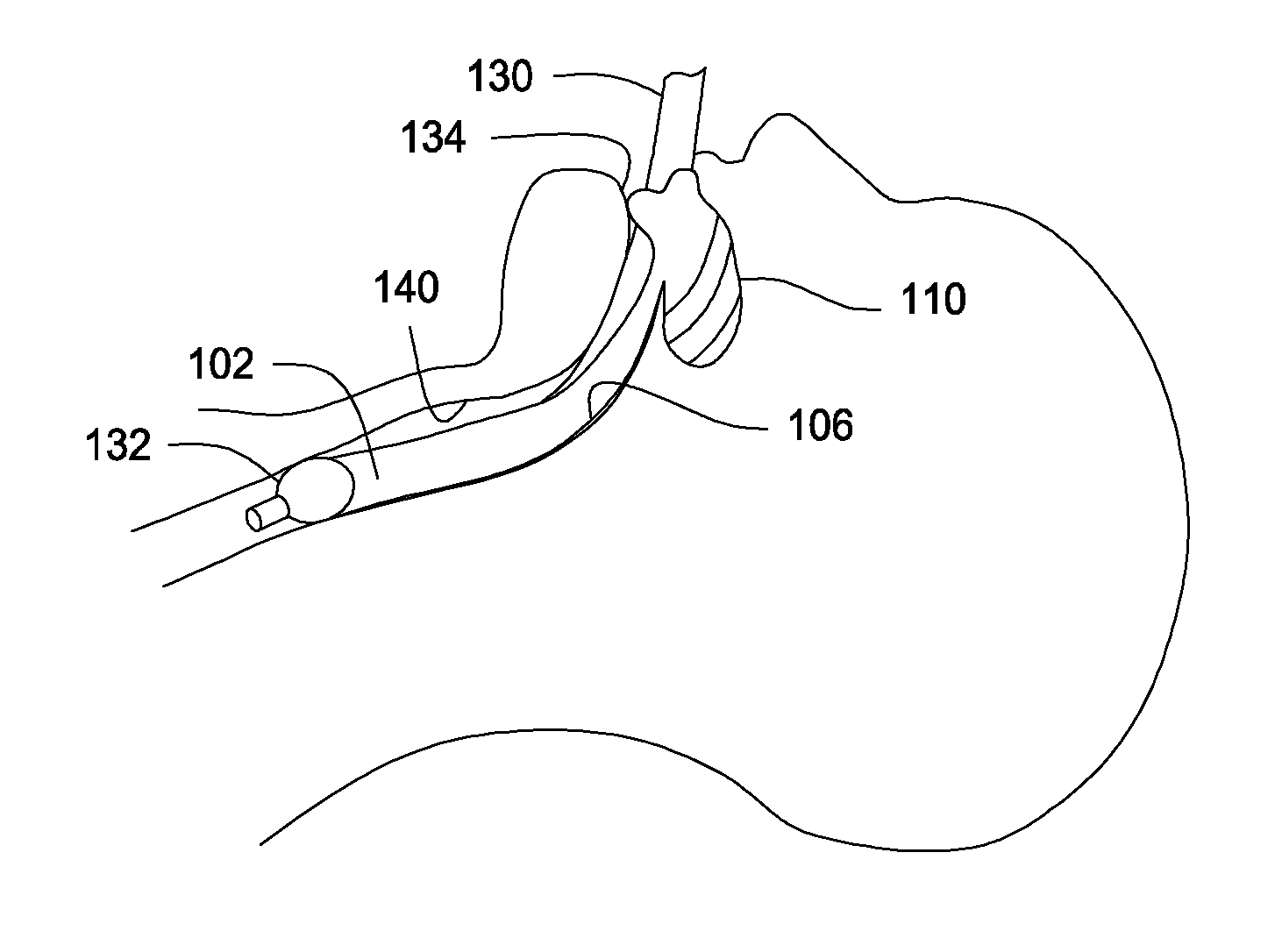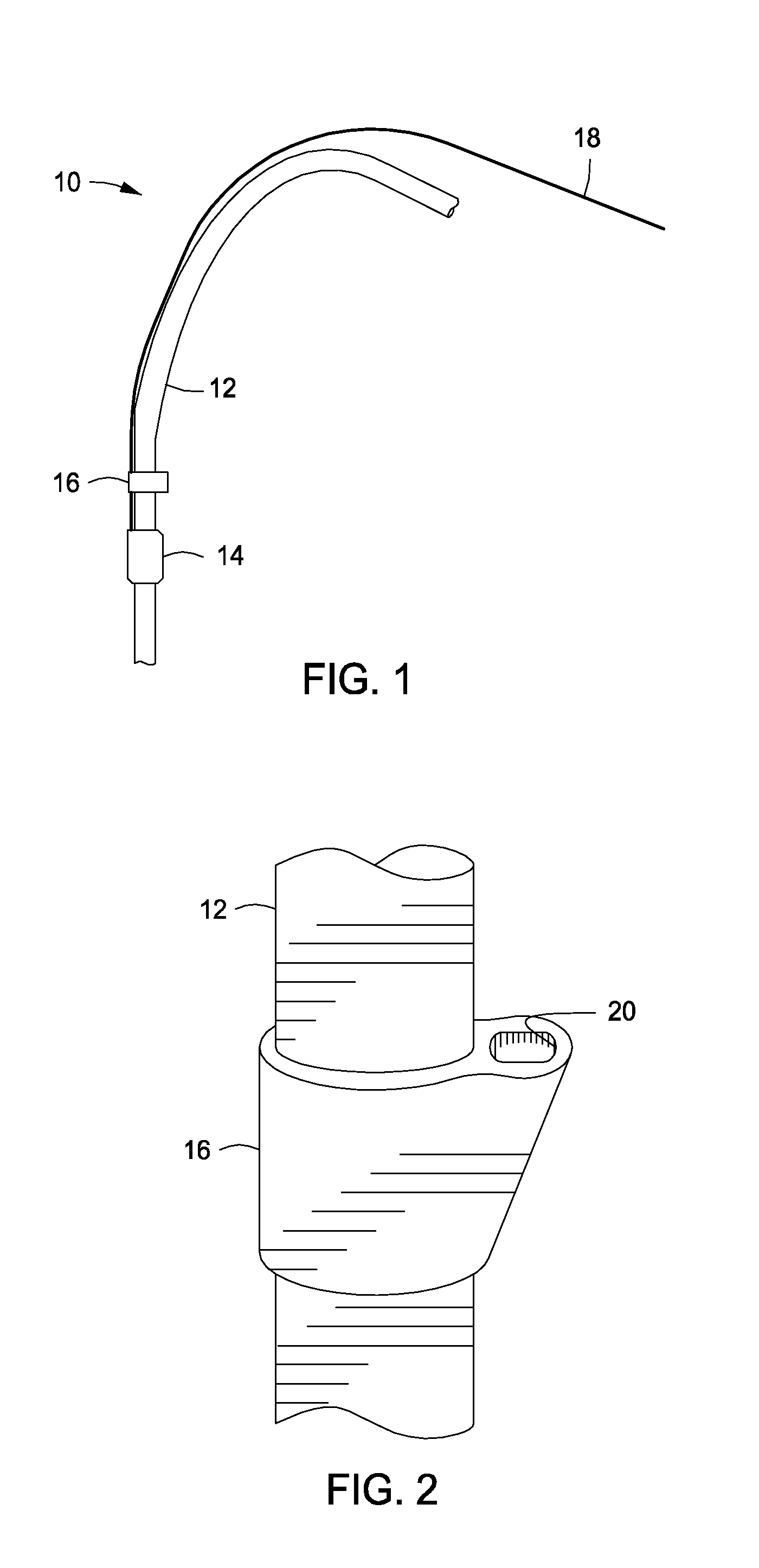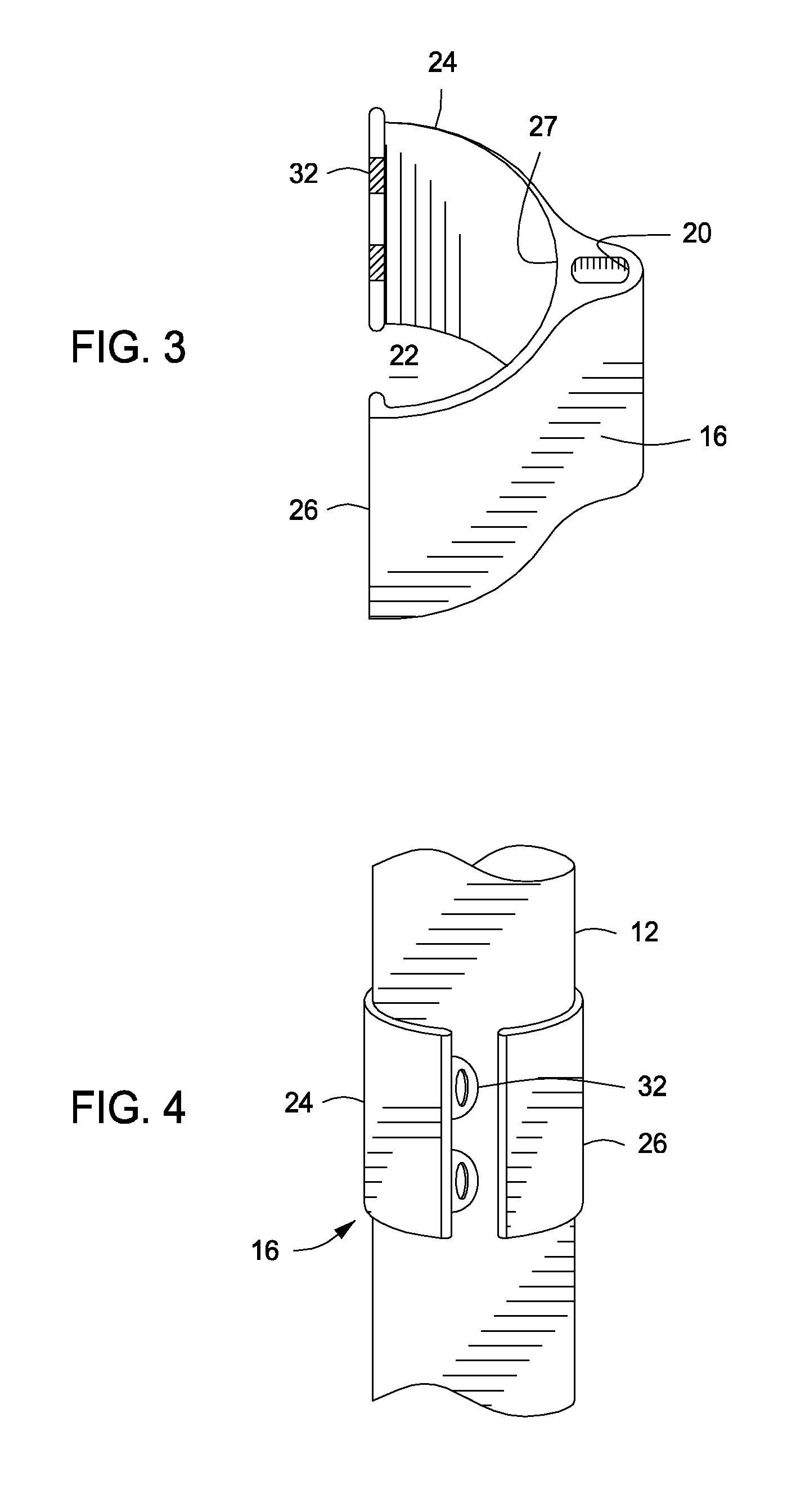Devices and methods for prevention of ventilator associated pneumonia
a technology for ventilators and pneumonia, applied in the field of ventilator associated pneumonia devices and methods, can solve the problems of increased nursing time, increased patient discomfort, and insufficient secretion removal of pneumonia,
- Summary
- Abstract
- Description
- Claims
- Application Information
AI Technical Summary
Benefits of technology
Problems solved by technology
Method used
Image
Examples
examples
[0111]Wicking devices as described above in connection with FIG. 9 were tested for wicking power in both saliva and mucous wicking. The length of the wicking sheet was 17 cm. The devices and saliva / mucus were placed in an insulated box maintained at temperature between 96 and 99 degrees F. Each device was placed at an angle of about 40 degrees from horizontal. Thus, the wicking devices were required to draw liquids against the force of gravity.
[0112]Two trials were performed on mucus. The duration of the mucus test was 7 hours. The mucus used was 3-day old nasal mucus harvested from a patient with a cold. The average volume of mucus wicked was 36 mL, stdev: 0.35. mL. This corresponds to a flowrate QM of about 5 mL / hour.
[0113]Three trials were performed on saliva. The saliva test was also 7 hour wicking challenge test. The saliva was fresh, having been generated by a healthy subject in the 24 hours preceding the trial. The average volume of saliva wicked was 40 mL. This corresponds t...
PUM
 Login to View More
Login to View More Abstract
Description
Claims
Application Information
 Login to View More
Login to View More - Generate Ideas
- Intellectual Property
- Life Sciences
- Materials
- Tech Scout
- Unparalleled Data Quality
- Higher Quality Content
- 60% Fewer Hallucinations
Browse by: Latest US Patents, China's latest patents, Technical Efficacy Thesaurus, Application Domain, Technology Topic, Popular Technical Reports.
© 2025 PatSnap. All rights reserved.Legal|Privacy policy|Modern Slavery Act Transparency Statement|Sitemap|About US| Contact US: help@patsnap.com



